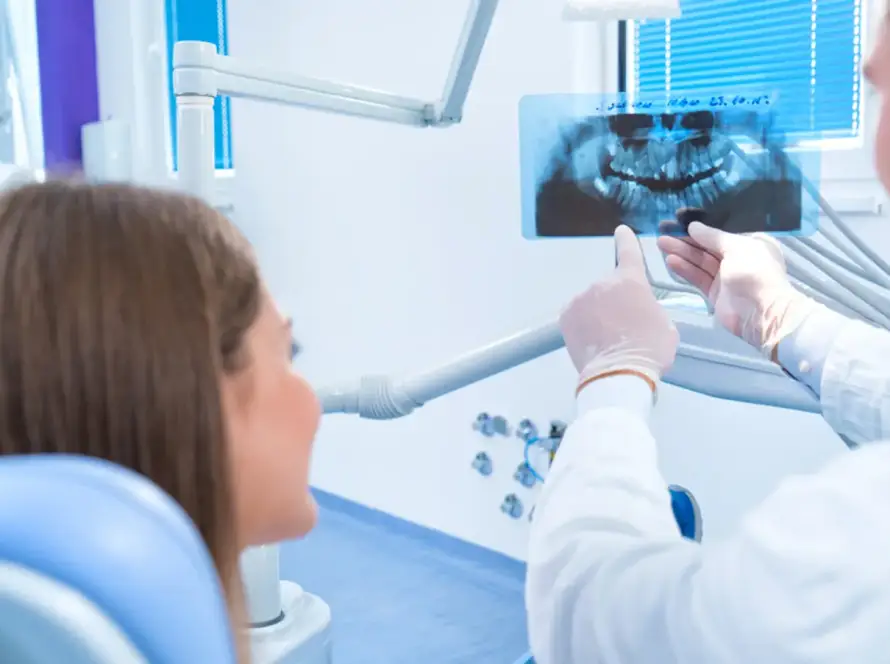Choosing the right toothbrush is an essential part of maintaining good oral hygiene. With so many options available on the market, it can be overwhelming to decide which toothbrush will best suit your needs. This guide aims to provide you with the necessary information to make an informed decision. Whether you’re concerned about the bristle type, handle design, or special features, understanding the factors to consider will help you choose the right toothbrush for a healthy smile. So, let’s delve into the world of toothbrushes and discover the perfect one for you.
Which Toothbrush Shall I Use?
When it comes to choosing a toothbrush, there are a few factors to consider. Here are some tips to help you pick the right one for your oral health needs:
- Bristle types: Toothbrushes usually come with soft, medium, or hard bristles. Dentists generally recommend using a toothbrush with soft bristles to avoid damaging the gums and tooth enamel. Soft bristles are also effective in removing plaque and debris from the teeth.
- Size and shape: The size and shape of the toothbrush head should allow easy access to all areas of your mouth, including the back molars. Choose a toothbrush that feels comfortable and allows you to reach all surfaces of your teeth.
- Electric or manual: Both electric and manual toothbrushes can effectively clean your teeth, but electric toothbrushes may provide some added benefits. Electric toothbrushes with rotating or oscillating heads can help remove plaque more effectively and may be particularly beneficial for people with limited dexterity.
- ADA seal of approval: Look for a toothbrush that has been approved by the American Dental Association (ADA). The ADA seal ensures that the toothbrush meets certain safety and effectiveness standards.
- Replace regularly: Toothbrushes should be replaced regularly, about every three to four months or sooner if the bristles become frayed. A worn out toothbrush is less effective in cleaning your teeth properly.
Remember, no matter which toothbrush you choose, it’s important to brush your teeth for two minutes, twice a day, and to also complement your brushing routine with daily flossing. Regular dental check ups and professional cleanings are also vital for maintaining good oral health.
Understanding Different Types of Toothbrush Bristles
When it comes to selecting a toothbrush, the type of bristles is an important consideration. Different types of bristles can offer unique benefits in terms of cleaning efficiency and comfort. Here are some common types of toothbrush bristles to help you make an informed choice:
- Soft Bristles: Soft bristles are gentle on the teeth and gums, making them suitable for individuals with sensitive gums or dental restorations. They effectively remove plaque and debris without causing any irritation.
- Medium Bristles: Medium bristles provide a balance between gentleness and effectiveness. They offer a deeper clean compared to soft bristles and are suitable for most individuals who do not have sensitive gums or dental issues.
- Hard Bristles: Hard bristles are the most abrasive and may cause irritation or damage to the gums or tooth enamel. They are generally not recommended by dental professionals as they can lead to tooth sensitivity and gum recession.
- Extra soft Bristles: Extra soft bristles are even gentler than soft bristles, making them a good choice for individuals with extremely sensitive gums, oral conditions, or after dental procedures. They are designed to provide a thorough clean without causing discomfort.
- Rubber Bristles: Some toothbrushes feature rubber bristles that are designed to gently massage the gums and stimulate blood circulation. These bristles can be beneficial for individuals with gum problems or those looking for added gum health benefits.
Ultimately, the best type of bristles for you will depend on your specific dental needs and preferences. It is recommended to consult with dentist or dental hygienist for personalized advice on the most suitable toothbrush bristles for your oral health.
Note that regardless of the type of bristles you choose, it is important to replace your toothbrush every three to four months, or sooner if the bristles become frayed or worn out. Regularly replacing your toothbrush ensures optimal cleaning and prevents bacterial buildup.
Selecting the Right Toothbrush for Your Specific Needs
When it comes to selecting a toothbrush, it is important to choose one that meets your specific dental needs. Here are some factors to consider:
- Bristle Type: Toothbrushes typically come with soft, medium, or hard bristles. Soft bristles are recommended by dentists as they are gentle on gums and effectively clean teeth without causing damage to tooth enamel or gum tissue. Medium and hard bristles may be too abrasive and can lead to gum recession or enamel erosion.
- Head Size: The size of the toothbrush head is another important factor to consider. A smaller head allows for easy maneuverability, especially in hard to reach areas at the back of the mouth. It is important to be able to reach all areas of your mouth to ensure thorough cleaning.
- Handle Design: The handle of the toothbrush should feel comfortable and provide a secure grip. Look for a handle that is easy to hold and control, as this will make brushing more effective and efficient. Some toothbrushes also come with ergonomic handles that reduce strain on the hand and wrist.
- Electric or Manual: Electric toothbrushes have gained popularity due to their ability to provide a more consistent and thorough cleaning. They often have features such as timers and pressure sensors to help improve brushing habits. However, manual toothbrushes can also be effective if used correctly with proper technique and duration.
- ADA Seal of Acceptance: Look for the American Dental Association (ADA) Seal of Acceptance on the packaging. This indicates that the toothbrush has undergone testing to meet certain safety and effectiveness standards.
Remember, it is recommended to replace your toothbrush every three to four months or when the bristles become frayed. Regularly replacing your toothbrush will ensure its effectiveness in maintaining good oral hygiene.
By considering these factors and understanding your specific dental needs, you can select the right toothbrush that will help you maintain healthy teeth and gums.
Exploring Electric vs. Manual Toothbrushes
When it comes to choosing a toothbrush, one of the main decisions you’ll encounter is whether to opt for an electric or manual toothbrush. Both options have their advantages and it ultimately comes down to personal preference and needs. Here are some points to consider when exploring the electric vs. manual toothbrush debate:
- Cleaning Efficiency: Electric toothbrushes, with their rotating or vibrating bristle movements, can provide a more thorough cleaning compared to a manual toothbrush. The oscillating or sonic movements of electric toothbrushes can reach areas that might be missed by manual brushing, increasing the removal of plaque and promoting better oral health.
- Ease of Use: Electric toothbrushes are generally easier to use, especially for those with limited dexterity, such as children or individuals with arthritis. The rotating bristles do most of the work, requiring less effort and ensuring a consistent brushing technique. Manual toothbrushes, on the other hand, rely on the user’s manual movements, which may not always be as effective.
- Cost and Maintenance: Manual toothbrushes are considerably cheaper than electric ones, making them a more economical choice. Additionally, manual toothbrushes require less maintenance since they don’t need to be charged or have brush head replacements. Electric toothbrushes, however, may require brush head replacements every few months and periodic recharging.
- Travel Friendly: Manual toothbrushes are lightweight, compact, and easily portable, making them a convenient option for travel. On the other hand, electric toothbrushes can be bulkier and may require a charging dock or discretionary batteries, which can be an inconvenience while traveling.
- Customization Options: Electric toothbrushes often come with different cleaning modes, pressure sensors, timers, and other features to improve brushing habits. These additional functions may enhance the brushing experience and help users maintain optimal oral hygiene. Manual toothbrushes lack such customization features but still offer a simple and effective way to clean teeth.
In the end, the choice between electric and manual toothbrushes boils down to personal preference, oral health needs, budget, and individual circumstances. It’s important to note that regardless of the type of toothbrush chosen, proper brushing technique and regular replacement of worn out bristles are key to maintaining good oral hygiene and overall dental health.
Considerations for Children’s Toothbrushes
When it comes to choosing toothbrushes for children, there are a few key considerations to keep in mind. Here are some important factors to consider when selecting a toothbrush for your child:
- Size and shape: Children’s toothbrushes should be smaller and have a suitable shape that fits comfortably in their mouths. Look for brushes specifically designed for kids, with smaller heads and softer bristles.
- Soft bristles: Gentle bristles are essential for the sensitive gums and developing teeth of children. Opt for toothbrushes with soft bristles to avoid any discomfort or damage to the enamel.
- Age appropriate designs: Children are more likely to embrace oral care when their toothbrushes have appealing designs. Look for brushes featuring their favorite cartoon characters or vibrant colors to make brushing a fun experience.
- Handle grip: Children’s toothbrushes should have easy to grip handles that allow them to hold the brush independently. Look for handles with rubber or textured grips to prevent slipping.
- Replaceable heads: Some children’s toothbrushes come with replaceable heads, which can be more economical and environmentally friendly in the long run. Consider this option if you’re looking for a sustainable choice.
Remember, it’s crucial to teach children proper brushing techniques and supervise them until they’re old enough to handle brushing on their own. Regularly replacing their toothbrushes every three to four months, or sooner if the bristles become frayed, is also essential for maintaining optimal dental hygiene.
Understanding the Role of Toothbrushes in Oral Health
Toothbrushes play a crucial role in maintaining oral health by effectively removing plaque and bacteria from the teeth and gums. Regular brushing with the right toothbrush can help prevent tooth decay, gum disease, and bad breath. Here are a few key points to understand about the role of toothbrushes in oral health:
- Plaque Removal: The primary purpose of a toothbrush is to remove plaque, a sticky film of bacteria that forms on our teeth. By brushing twice a day, you can effectively remove plaque and prevent it from hardening into tartar, which can only be removed by a dental professional.
- Gum Health: Toothbrushes also aid in maintaining healthy gums. Brushing stimulates the gums, promoting good blood circulation and preventing gum diseases like gingivitis and periodontitis.
- Preventing Tooth Decay and Cavities: Brushing with fluoride toothpaste helps strengthen tooth enamel and protects against tooth decay. The bristles of the toothbrush reach the areas between the teeth and along the gumline, where bacteria tend to accumulate and lead to cavities.
- Fresh Breath: Proper brushing with a toothbrush helps eliminate the bacteria responsible for bad breath. Regular brushing also removes food particles that can contribute to an unpleasant odor in the mouth.
- Overall Oral Health: The role of toothbrushes goes beyond just cleaning the teeth. It promotes overall oral health by preventing dental problems, reducing the risk of gum diseases, and maintaining fresh breath.
Remember to choose a toothbrush with soft, rounded bristles that can effectively clean the teeth and gums without causing any harm to the enamel or gums. Pair it with a fluoride toothpaste and replace it every three to four months or sooner if the bristles become frayed. Regular visits to the dentist should complement your brushing routine for optimum oral health.
Tips for Making the Most of Your Toothbrush
To ensure optimal oral hygiene, it is essential to make the most of your toothbrush. Here are some tips to help you achieve a thorough and effective cleaning experience:
- Brush twice a day: Brushing your teeth at least twice a day is crucial for maintaining a healthy smile. Make it a habit to brush in the morning and before bed to remove plaque and bacteria.
- Use proper technique: It’s not just about how often you brush, but how you brush. Hold your toothbrush at a 45 degree angle and use gentle, circular motions to clean all surfaces of your teeth, including the front, back, and chewing surfaces.
- Replace your toothbrush regularly: Over time, the bristles of your toothbrush can become worn, frayed, and less effective at cleaning. Replace your toothbrush every three to four months or sooner if you notice any signs of wear.
- Consider an electric toothbrush: Electric toothbrushes can offer a more thorough and efficient cleaning compared to manual brushes. They often have built in timers to ensure you brush for the recommended two minutes and have oscillating or rotating heads for better plaque removal.
- Don’t forget the tongue: A significant source of bacteria in the mouth is the tongue. Use either your toothbrush or a tongue scraper to gently brush or scrape your tongue to remove bacteria and prevent bad breath.
- Clean and store your toothbrush properly: Rinse your toothbrush thoroughly after each use to remove any remaining toothpaste or debris. Store it upright and let it air dry to prevent bacterial growth.
Remember, a toothbrush is only as effective as the person using it. By following these tips and maintaining good oral hygiene habits, you can make the most of your toothbrush and keep your teeth and gums healthy.















